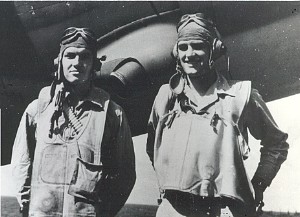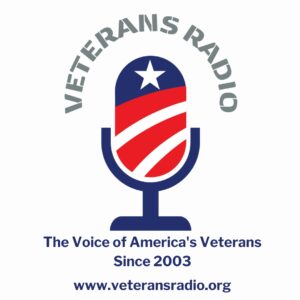John Montgomery
Shot Down Over the Pacific
 The first week of November 1944 was busy for the pilots of Air Group 15, flying from the USS Essex. At 0630 on the morning of November 6th, twenty-six F6F Hellcat fighters, nine SB2C Helldiver dive-bombers, and five TBM Avenger torpedo bombers left the deck of the USS Essex to join air groups from other carriers in the task force under the command of Admiral W.F. Bull Halsey in the first wave of strikes against the Japanese forces at Clark Field, as well as enemy ships in Manila and Salanguin Harbors.
The first week of November 1944 was busy for the pilots of Air Group 15, flying from the USS Essex. At 0630 on the morning of November 6th, twenty-six F6F Hellcat fighters, nine SB2C Helldiver dive-bombers, and five TBM Avenger torpedo bombers left the deck of the USS Essex to join air groups from other carriers in the task force under the command of Admiral W.F. Bull Halsey in the first wave of strikes against the Japanese forces at Clark Field, as well as enemy ships in Manila and Salanguin Harbors.
Young Helldivers
Seated in the cockpit of one of the SB2C Helldivers was pilot, Navy Lieutenant William S. Bill Rising (at right in photo). Behind him was his radioman/gunner, ARM2/c John Montgomery (left). One week earlier John had celebrated his 21st birthday. Now he carefully scanned the heavens for signs of the enemy in hopes of eventually celebrating his 22nd.
As the aircraft neared the target on a dock area near Manila, groundfire began to burst around the American planes. Lieutenant Rising looked below and found a choice target, a Japanese destroyer. He put his dauntless into a vertical dive, screaming in on the enemy ship at almost a 90-degree angle to lay his bombs on its deck. Around the rapidly falling airplane burst the deadly rounds of enemy anti-aircraft fire. Manning the gun behind his pilot, John Montgomery did his best to ignore it and concentrate on the mission at hand. Though young, he had already completed 38 such missions and was becoming an "old hand".
Escape for Safety
Suddenly the sound of the diving Hellcat's engine changed. Enemy fire had struck home, Lieutenant Rising's airplane was crippled. Quickly the pilot pulled out of his dive, struggling to level his aircraft. Both men removed their safety belts and climbed out on a wing to bail out. Then, as the Helldiver began to level more, Lieutenant Rising yelled across to Montgomery, "I think I can still control 'er. Let's see if we can make it out past Manila Bay." Both men climbed back into the falling Helldiver, buckled up, and headed out to sea and away from the bay that was filled with enemy ships.
The airplane would definitely not be returning to the Essex, but any distance the two men could put between themselves and the enemy-controlled bay would decrease their chances of capture. As they moved further from Manila Bay, they continued to also drop closer to the swells of the sea. Montgomery took the life raft from its storage tube and put it across his cockpit, bracing his head against it as a cushion. Lieutenant Rising struggled against the controls, bouncing the Helldiver over a couple of waves before it nosed into the sea with great force.
In the brief moments, before the airplane slipped to the ocean floor, Bill Rising climbed out onto the wing and Montgomery threw him the raft. The contents of two 30 caliber ammunition boxes had spilled on the gunner during the crash landing, and as the cockpit filled with water Montgomery struggled to free himself. Then, to his horror, the young man from Kentucky realized that in the adrenaline-charged moment of danger, he had forgotten to unbuckle his safety belt. Working feverishly against both the weight of the ammo and the restraint of his harness, he lost precious seconds. Water washed over him as the plane sank beneath the waves. Somehow, miraculously, he worked his way free and actuated his life vest. Only one side inflated, and John Montgomery popped to the surface coughing up the briny water and tilted at an awkward angle. But at least he was alive.
Stranded At Sea
The salty water stung the open wounds of Montgomery's ankles where enemy flak had punctured flesh, and Lieutenant Rising tried to shake off the fuzziness caused by a wound to his head when the airplane slammed into the sea. On impact, the cans containing freshwater had popped open and filled with marking dye, making it useless to the men. So quickly had the Helldiver sank, none of the emergency rations could be saved. They were two men with no supplies, no freshwater, and only a small raft...adrift in the South Pacific.
At least they were not alone. Other fighters circled overhead for a time, keeping pace with the downed airmen. One dropped a life jacket and a canteen of water. Another dropped a life raft. Then, low on fuel, the other planes of the task force returned to their carriers. Less than 3 hours after the strike force had taken off, the Deck Log Entry on the USS Essex reported, "6 Nov 44, 0952 Landed planes of Strike No. 1 and Sweep No. 1, less VF SB2C piloted by LT(j.g.) W.S. RISING, USNR and crewman MONTGOMERY, J.W., ARM2/c USNR. Failed to return from strike No. 1 and believed to have made a water landing 26 miles near SAMPOLEC POINT, SUBIC BAY area."
The two airmen didn't feel abandoned. They knew, as did their fellow pilots, that an American submarine was in the area. Before the other pilots had left to refuel, they had received radio information that the sub was 21 minutes away from their comrades, and would pick them up. As the morning wore on into the afternoon, however, Rising and Montgomery saw no sign of rescue. Soon, rather than scanning the surface for the rescue sub, they scanned for Japanese gunboats and watched the skies for enemy planes.
Landfall
As the day wore on, survival turned into a plan for escape and evasion. The men knew they were at the mercy of the enemy, floating alone on the surface of the sea. Already they had been spotted by a Japanese seaplane that had strafed their raft, pitting it with bullet holes. (Fortunately, neither man was hit.) Scanning the horizon for a safe landing place, the two survivors knew that if they made their way to the nearest side of Luzon, they would be putting to shore in an area heavily controlled by the enemy. They elected, instead, to row southward to the smaller Fortune Island. The small strip of land only half-mile long and 150 yards wide doesn't even show on most maps. Working through the evening and into the night, they finally made the shoreline shortly before dawn.
Exhausted, the men hid their raft and then used the daylight hours to get some much-needed sleep. In the darkness of their second night, they patched the bullet holes in their raft, then began rowing to the far side of Luzon Island. During their second night of escape and evasion, they were suddenly startled when a flying fish landed on their raft. Surprise turned to Thanksgiving as they cut it up in chunks and shared its meat for nourishment.
As they neared the island, they could see the lights of Nasugbu, but they steered past it to avoid any signs of the enemy. Eventually, they found a small cove, beached their raft, and made their way several hundred yards into the jungle to rest until daylight. The crowing of a rooster signaled dawn, and also the presence of a home nearby. Cautiously making their way towards civilization, they found the home belonged to Leon Lagos, who identified himself as a member of the Fil-American Guerrillas. While the food was prepared for the two men, Lagos sent men back to the cove to ensure that the American's life raft would not be discovered. His son, Andres, spoke English and operated as an interpreter for the soldiers of different tongues. He explained that the following day, the guerrillas would attempt moving the downed airmen to a hideout in the hills.
An Adventure for Survival
In the weeks that followed, the two Americans literally placed their lives in the hands of the people that inhabited the rural farms in the Japanese-controlled Philippine Islands. The poor farmers had little, and what they had was often brutally taken from them by enemy patrols. Still, they were quick to share their meager supplies with the two downed airmen. The wounds in Montgomery's legs were untreated and, in the tropical climate, quickly became infected. Montgomery himself struggled against the pain and fought for survival. Eventually, someone found some sulfa, and the infection began to disappear.
Not only did the local civilians share their meager supplies to sustain the Americans, but they also shared their danger. Theirs was the same brutal enemy that had conducted the infamous Bataan Death March, that had raped at will, and killed for sheer pleasure. Any trace of the American's presence, or any hint that the civilian populace had rendered assistance to them, would be met with quick and brutal violence. Likewise, the guerrillas they moved with the two men, shared danger on an almost daily basis. Occasionally, they encountered enemy patrols. Always, they moved with great caution...crawling through rice paddies, hiding in hills, and slipping quietly into occasional huts for sleep. One night they bedded down in a small hut along the coast, only to awake to the sound of Japanese voices. Not far away, neatly camouflaged with tree branches, an enemy destroyer had tied to the bank.
On December 11, 1944, Mrs. Sarah Katherine Montgomery received a Western Union telegram at her home in Shelbyville, notifying her that "The Navy Department deeply regrets to inform you that your son...is missing following action while in the service of his country." Meanwhile, John Montgomery and Bill Rising had made their way to the Natipuan mountain garrison where the guerrillas were commanded by ROTC cadets from the Philippine Military Academy and some former Philippine Scouts. Many of these had lived...and fought...in the jungles for three years. All were determined to do all things necessary to rid their homeland of the invading Japanese.
From the Natipuan camp, the two airmen were moved deeper into the hills to join a Guerrilla force commanded by Colonel Terry Magtongol. There, they learned, that stories of the valiant efforts of the Filipino people to rescue and nurture downed airmen and prisoners, were not at all uncommon. For the first time in weeks, they saw other American faces, Lieutenant(jg) Donald Dondero, USN, CPO Burt C. Fuller, and Sergeant Raymond Humphreys. The two latter men had escaped a Japanese prison camp where they had been held since the early days of the invasion of the Philippine Islands. A short time later, the Guerrillas began the dangerous trek south through enemy lines to the southern coast of Luzon, moving the five Americans towards what they hoped would be rescued.
Back in American Hands
The trip took several days, dangerous days when friendly civilians hid the escaping Americans in their homes and shared their meager supplies to sustain them. From Luzon, the men were placed on small boats under the cover of darkness for a night voyage from Balayan Bay to the northern coast of Mindoro. There they met up with yet another Guerrilla force, this one under the leadership of Commander George Rowe, US Navy.
While waiting for rescue, John Montgomery developed a high fever that lingered for four days. Then, the plan for their rescue was delivered by radio to Commander Rowe. The men were to sit offshore in a small rowboat and fly an American flag. Feeling somewhat conspicuous, for eleven days the Americans followed the procedure, attracting only the attention of Japanese airplanes. Finally, the plan was abandoned. When at last American forces invaded Mindoro, the men were picked up by PT-222 and PT-220 from the MTB Squadron. The rescued Americans spent the night with the invasion forces, enduring the Japanese efforts to thwart the invasion by dropping phosphorus bombs. They spent Christmas Eve with the American Forces on Leyte beachhead, and then Christmas dinner aboard the USS Currituck. As a Christmas gift, Montgomery received a bar of soap, writing paper, and a broken pencil from the Red Cross. But, of course, no Christmas present could equal his new sense of freedom.
From Leyte Rising and Montgomery were flown to Manus, then on to Hawaii. The following day, Lieutenant Rising flew back to the United States. His wife, with the couple's young baby, drove from Brooklyn to meet him on the West Coast. During their brief reunion, Lieutenant Rising, who would eventually receive the Navy Cross, signed up for another tour. He returned to finish the war flying "single-seater" aircraft.
A Homecoming
John Montgomery joined many other returning Americans in Operation Magic Carpet, returning to Alameda, California on an escort carrier. In January he arrived, still wearing Marine greens and the oversized army boots that had been issued to him at the beachhead in southern Mindoro. After returning home for a 30-day leave, he reported to the Naval Air Training Center in Memphis, then refresher training at gunnery school, and finally on to a PB4Y squadron in Jacksonville, Florida. On September 13, 1945, just eleven days after the signing of the surrender documents that ended World War II, John Montgomery finished his military service and was discharged. Among his many awards were the Distinguished Flying Cross (for action on October 25, 1944...12 days before he was shot down), Air Medal, Purple Heart, and numerous campaign and service ribbons.
Returning to his native Shelbyville, Kentucky home, John Montgomery went to work for the US Postal Service, from which he later retired. On Veterans Day, 1997, John Montgomery was selected among 50 former members of the Navy, Marine Corps, and Coast Guard, for induction into the Enlisted Combat Aircrew Roll of Honor aboard the USS Yorktown in Patriots Point, South Carolina. Unable to personally attend, John told a local newspaper, "My legs don't work as they did. I haven't even been able to put my flag out." In his place, his son attended the impressive ceremony. He is also a member of the U.S. Navy Memorial on Pennsylvania Avenue in our Nation's Capitol where a plaque and his photo hang in honor of his service.
Reflecting
John maintained contact with his former comrades of AG-15 and the USS Essex. He has never forgotten the brave Filipino civilians or the courageous Fil-American Guerrillas to whom he owes his freedom, if not his life. Years later he says:
"I cannot find enough words of praise to describe the manner in which the friendly Fil-American guerrillas took care of me and the other American fliers who were in the same helpless condition. The Philippine people made great sacrifices to feed us when they didn't have enough food for themselves. They sheltered us and kept us hidden from the Japs at great risk to themselves and their families. Our survival would have been impossible without the aid of the Fil-Americans. Some of these wonderful people are Leon Lagos, Andres Lagos, L.A. Desacola, Pedro Rinosa, Crisogon, Bayani, Ernesto Villamarin, Jose Samaniego, Hilario Angeles, Julian Teserero, Venancio Gondenara, Ramon Lisboa, Emelie Baryon and Florentine Selano. There were many more, too numerous to recall their names, who aided us greatly."
John Montgomery also remembers his friend and pilot with whom he shared the dangers of combat missions in the Pacific, being shot down over Manila Bay, six weeks of harrowing escape and evasion in the hills of the Philippines, and a daring rescue. Lieutenant Rising was unable to counter-sign John's 1958 letter in support of the brave Fil-American Guerrillas. Returning home in 1945 from his second combat tour, Rising's wife and daughter again made the drive from Brooklyn to the West Coast to meet him. On their return trip to New York, Lieutenant William Rising and his young wife were killed in an automobile accident. Only his infant daughter survived the horrible crash.
About the Author
Jim Fausone is a partner with Legal Help For Veterans, PLLC, with over twenty years of experience helping veterans apply for service-connected disability benefits and starting their claims, appealing VA decisions, and filing claims for an increased disability rating so veterans can receive a higher level of benefits.
If you were denied service connection or benefits for any service-connected disease, our firm can help. We can also put you and your family in touch with other critical resources to ensure you receive the treatment you deserve.
Give us a call at (800) 693-4800 or visit us online at www.LegalHelpForVeterans.com.
This electronic book is available for free download and printing from www.homeofheroes.com. You may print and distribute in quantity for all non-profit, and educational purposes.
Copyright © 2018 by Legal Help for Veterans, PLLC
ALL RIGHTS RESERVED



